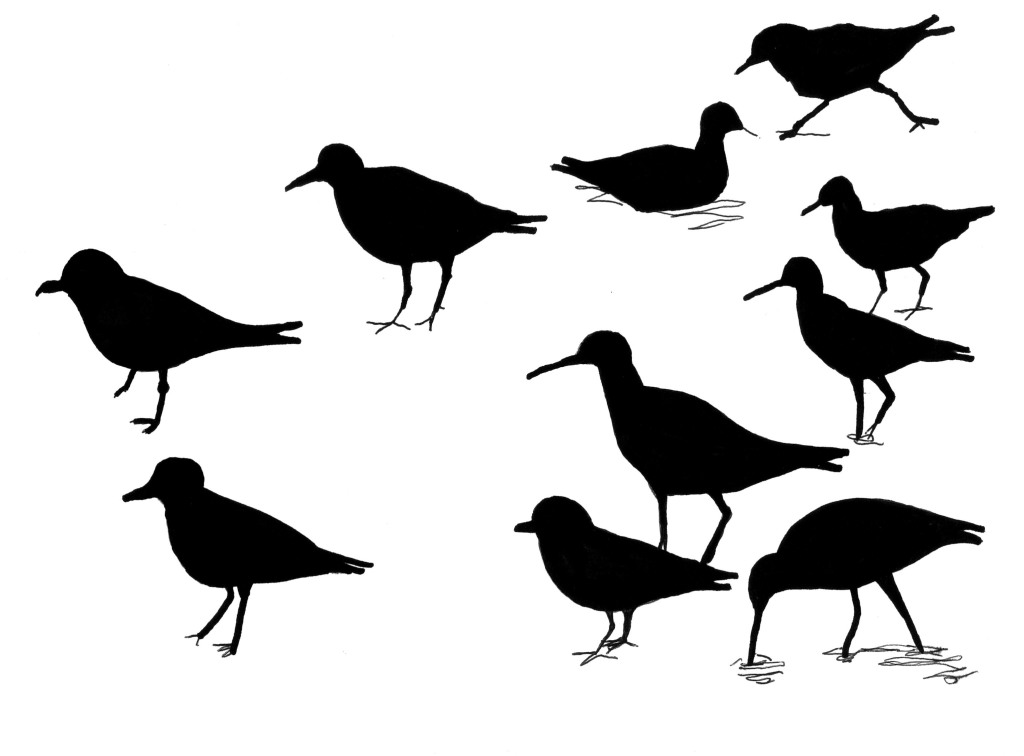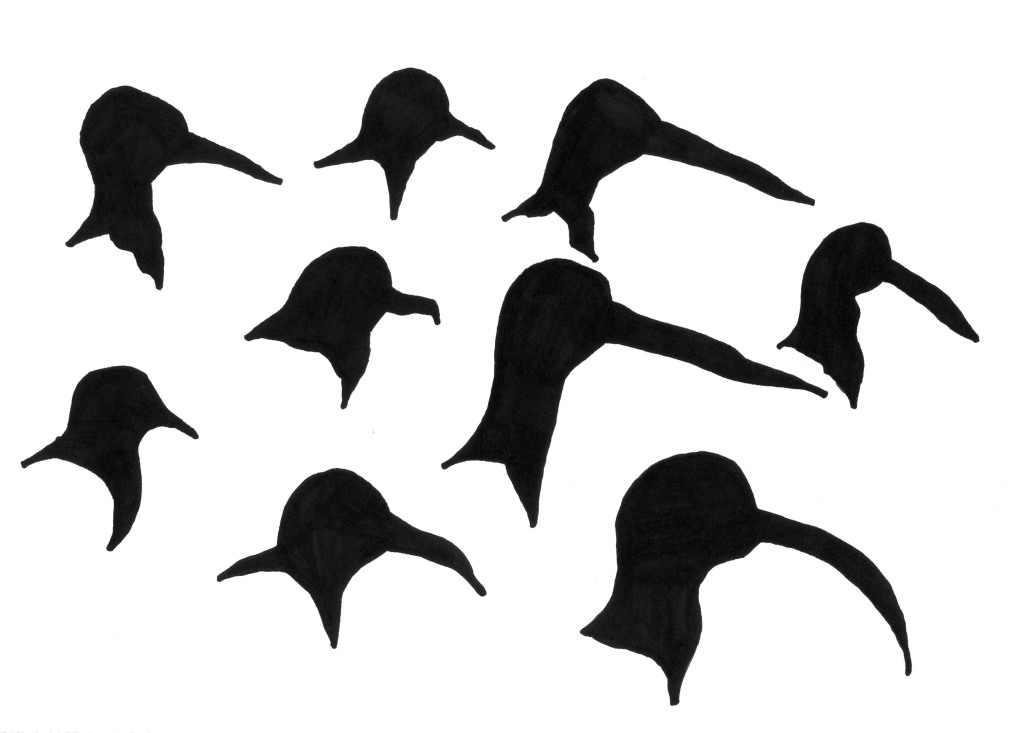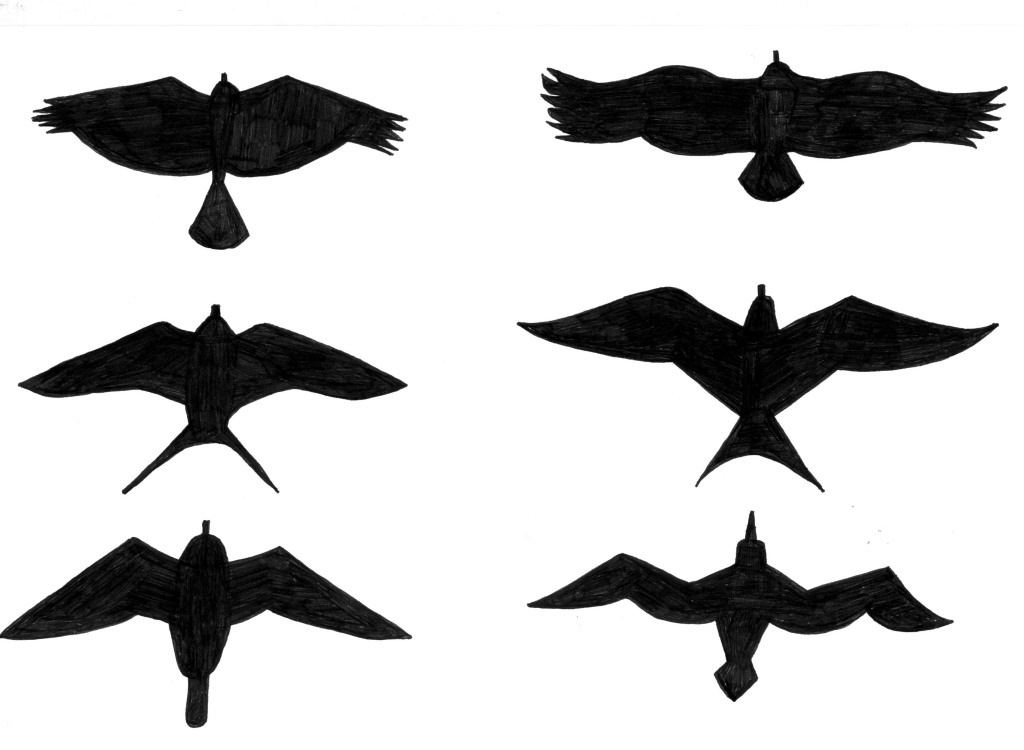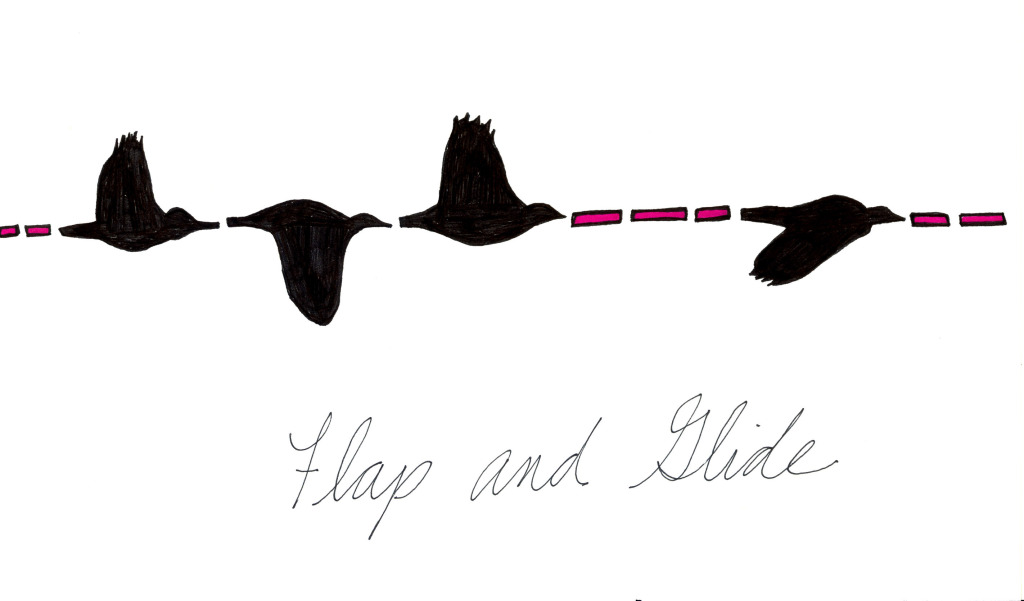I started working on a field guide because I think that paper field guides, like travel guides and encyclopedias, will be gone soon. One reason is that the kinds of things that guides describe for each bird in order to differentiate them are often the things about birds that are difficult to document in print. Like birdsong:
Quiet whistled peeping notes. A soft thup-thup. A high, froglike drip. Harsh, high-pitched cackle. Lower kak-kak-kak. Seldom heard, a yelping bark. Series of sharp, annoyed whistles. Near nest, a frenzied cheereek! Low-pitched, harsh raaaah! Series of loud whistles. Nasal, drawn-out keeeeeah. High-pitched squeal. Tawit! hee-hee-hee-hee-hee-hee-hee. A rolling trill. High, thin, mouselike jeet, like two flint pebbles scraping. Low, reedy chart or trrip, trrip. Single whu. Clear peet or peet-weet!. Sharp tik. Mellow, whistled kip-ip-ip-ip, often heard at night. A weird windy whistle. Whoooleeeeee, wheeloooooooooo. Fluty dududududu or sharp piping twita-wit-wit-wit. Sanderling-like tit. Up-slurred whistle, too-wheet? or tu-whip? A dry tree, often repeated in cricketlike trill. Purring prrp. A throaty, rasping za-za-za. Sharp, repeated kit. A harsh, squealing zree-eek. Also a rapid kitti-kitti-kitti. Three-syllable whistle. Variety of chatters, croaks, and bill rattles. Nasal wide-a-wake or wacky-wack. Soft, short, barking notes. A liquid peet. A dry chif-chif. An emphatic TEACHer, TEACHer, TEACHer. Shrill chatter. Chip, chip, chip, weedle, weedle, che, che, che, che. Wheezy or hissing peee, very high-pitched. A low, growling ow or arr. A repeated rick. Deep whoo-hoo-hoo. Also deep single whose. Mellow hoot. A slurred, rich chip. Rapid, high-pitched whi-whi-whi-whi-whi-whi or chewk-chewk-chewk-chewk, often becoming higher and more yipping or puppylike, and chattering in the middle. Series of ticking notes. A sharp popping sound when diving. Zree. Wurp. Churrr. A distinctive sharp tsup. Cheedle cheedle che che che che. Zray zray z-z-z-zeee.
These were some of my favorites in the latest edition of Peterson’s Guide. The sounds that birds make are obviously easier to render in a digital environment. But I have to admit I’m in love with the language that they’re using to try to bridge that gap between print and sound.
In the mid-twentieth century a birder named Aretas Saunders published his Guide to Bird Songs, an illustrated manual that attempted to develop a whole new way of describing bird song visually, without using musical notation, so that it would be able to be understood by all. Here’s his diagram of the song of the Veery:
Bird guides are also full of certain kinds of unique visual shorthand to get you to see what makes one bird different from another, like silhouettes:
Silhouettes are often included in the front part of the field guide, so that if you’re a beginning birder you can see more clearly how different kinds of birds have different bill shapes, head shapes, wing shapes, etc.
Field guides also commonly describe habits, flight patterns, wing qualities, nesting habitats, and other generalizations for each species.
Birders also observe the habits of birds, what kinds of personalities they have. This is an accumulation of different descriptions of behavior:
A somewhat undulating flight. A seed-cracking bill. Wing-flicking behavior. Gregarious. They walk briskly instead of hopping, and most wag their tail. Excellent songsters. They do not sing because they are happy. Often seen on lawns , with an erect stance, giving short runs then pauses. Dippers dive and swim underwater, where they walk on bottom. Tail often cocked. Nuthatches habitually go down trees headfirst. Sexes similar, or mostly so. Probes bark of trees. Acrobatic when feeding. Most often heard before they are seen. Graceful flight. Eat almost anything edible. Perch watchfully on bush tops, treetops, wires. Often impale prey on thorns, barbed wire. They can recognize relatives they haven’t seen in years. Some parents recruit nannies. Perching above water, or hovering and plunging headlong. Will offer their partner a sunflower seed as a token of affection. Flight is brief and reluctant, with legs dangling. Often oval, giving loud squeaks, grunts, and peeps. Walk is sedate. Solitary. Flight very rapid, “twinkling”, sailing between spurts. Erect when perched. May remain motionless for long periods. Flutter when plucking berries. Pugnacious. They can fly backward.
Field guides as we know them are manuals to help us easily classify and identify natural phenomena as we see it in front of us. Visual shorthand and brief synopsis are all used to make distinctions between species, in a way that can be accessed easily. It’s all a translation, from a particular living bird in front of us, to a general example of a bird on a page. Writers of field guides take the mess of lived experience and convert that into rational, ordered lists and diagrams.
Flight paths are abstracted into types; song is translated into diagrams. Video and sound files in modern apps can show the diversity of bird behavior in a easier to access kind of way. I still hope, however, that some of this kind of language will make the digital leap.







2 comments for “What Does It Sound Like”